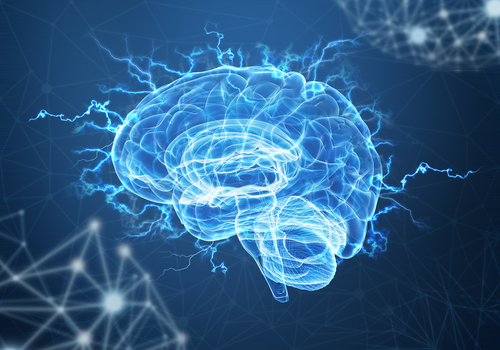Altered Nerve Cell Communication Tied to Motor Difficulties of Rett

Problems with nerve cell communication and adaptation in the brain’s motor cortex is associated with the severity of motor difficulties in people with Rett syndrome, a study shows.
The research — which used a non-invasive method to show such neural deficits in Rett patients for the first time — suggests that these nerve cell parameters may be used as biomarkers of disease progression or treatment response in clinical studies.
The study, “Neurophysiological Signatures of Motor Impairment in Patients with Rett Syndrome,” was published in the journal Annals of Neurology.
Rett syndrome is most commonly caused by mutations in the MECP2 gene, which contains instructions to produce the MeCP2 protein. MeCP2 is essential for maintaining synapses — the junctions between nerve cells where messages are transmitted — and for the ability of neurons to adapt in response to the environment, called neural plasticity or learning.
A balance between excitatory and inhibitory neural signals is needed for proper communication between nerve cells in the brain. While excitatory signaling propagates a signal by helping to activate the receiving nerve cell, inhibitory signaling has the opposite effect.
Several studies have reported deficits in gamma-aminobutyric acid (GABA) — the main inhibitory messenger in nerve cell communication — in mouse models of Rett syndrome, leading to an imbalance of excitatory and inhibitory signals in the brain, and poorer synaptic plasticity.
However, whether similar neurological changes are present in people with Rett is not known. “Although motor deficits are considered among the most debilitating symptoms of [Rett patients], little is known about the underlying [disease-associated] mechanisms,” the researchers wrote.
Researchers in Italy assessed the neurological mechanisms behind motor dysfunction in Rett patients by analyzing the balance of excitatory/inhibitory signals, as well as synaptic plasticity in a motor region of the brain.
The team used a non-invasive technique called transcranial magnetic stimulation (TMS) to locally stimulate the patients’ primary motor cortex — one of the main brain areas involved in motor function — and analyze nerve cell responses.
The final analysis included 11 of 14 young adults with Rett syndrome (mean age of 22.6), as well as nine women with epilepsy taking anti-seizure therapies, and 11 healthy women serving as control groups.
Rett patients’ motor function was assessed using the motor-skill categories of the Clinical Severity Score (CSS) and the Rett Syndrome Gross Motor Scale (RSGMS).
These patients had a significant shift toward excitation in the excitation/inhibition balance, and impaired neural plasticity in the primary motor cortex, compared with the control groups, results showed.
Researchers said these findings further support the role of GABAergic dysfunction, or impaired GABA-associated mechanisms, in the excitatory/inhibitory imbalance of Rett patients.
Data also showed that these nerve cell changes were associated with a greater degree of functional motor disabilities, suggesting that they greatly contribute to the progression of motor difficulties in people with Rett.
The findings are consistent with data from preclinical studies, the researchers said, and support the idea that “the deficit of MeCP2 impairs functional synaptic plasticity in the maturing nervous system and not during brain development.”
“Here we have shown the relationship between motor symptoms severity and alteration of [neurological parameters in the primary motor cortex],” the researchers wrote. This raises the possibility of using these TMS parameters as biomarkers of disease progression or to monitor treatment responses, they added.
These data also suggest that simultaneous use of pharmacological and non-pharmacological therapies targeting impaired neural plasticity in Rett patients may be of therapeutic benefit, the scientists said.






